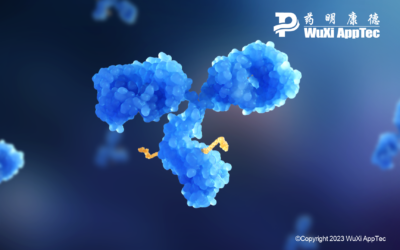For drug developers ready to progress a molecule to the pivotal clinical trial stage, filing an Investigational New Drug (IND) application with the U.S. Food and Drug Administration (FDA) is a significant milestone. Drug developers approach this task with a wide range of experience levels and varying access to a dedicated toxicologist to support this step. A thorough understanding of the IND application process can set expectations, streamline testing and organize the required planning for a successful application.
IND packages require exhaustive data on the efficacy and safety of the drug, but if this information is not robust and well-documented, your compound could fail. Comprehensive, proactive planning can safeguard against pitfalls and prevent data gaps or delays.
Getting the green light from regulators
The purpose of the IND application is to prove to regulators that your molecule is reasonably safe to start initial human trials and demonstrates efficacy in its intended function or potential effects. The application helps lay the foundation for the rest of the development process, so correctly planning for and generating a thorough application is vital to your project’s long-term success.
Drug developers collecting data to support this application need to understand that the process is unique to each molecule and category, between small molecules, large molecules and cell therapies. To plan for your next application accordingly, reviewing the following key components of the application and potential pitfalls can improve the chance for a favorable submission.
The IND application broken down
An IND application provides regulators with a full picture of the drug, which breaks down into three components. These components include chemistry, manufacturing and control (CMC) data, preclinical studies and clinical trial planning.
The role of CMC data is to provide a detailed analysis of the molecule in two areas: the substance and methods. The substance data demonstrates a drug’s identity, purity, potency and stability. This information must support a clear intention and structure behind the molecule’s composition. As for methods, you must disclose all substances that may be present in the manufacturing process. Applications that also describe the production methods can further improve the quality of the file.
Next, preclinical studies should prove the safety and efficacy of your molecule. Regulators want to see data-driven evidence that proves your product is ready for clinical trials. Pharmacology data from this component demonstrates initial evidence of efficacy (often using animal disease model) and portrays the effects on the testing system, including the absorption, distribution, metabolism and excretion of the drug. Alternatively, toxicology data displays the safety of the drug and potential adverse effects.
Lastly, clinical trial information should show that you’ve done the necessary planning for execution. These should be detailed plans with data supporting the rationale behind decisions and trade-offs. This section should include the planned tests and who is performing them. Qualified clinical investigators are valuable assets to clinical trials, so including the background that showcases these individuals helps build credibility.
Don’t let information gaps put your application at risk
Drug developers often own the role of summarizing study findings, including critically analyzing complex information. Without adequate expertise, this task may be more challenging than one may anticipate. For example, deciphering unexpected results or identifying relationships between data sets can be time-consuming and requires experience.
A well-written IND application plays a significant role in achieving regulatory acceptance and requires expertise. It is critical for drug developers to properly evaluate if their internal team has the capacity and quality experience to complete the task. If sufficiently collecting study findings is outside your wheelhouse, or if internal resources are tight, consider leaning on a consultant or a laboratory testing partner. Working with the right partner is essential to succeed in developing a new drug.
The IND application process is an intensive step in drug development. While achieving a successful application can bring a product to a pivotal stage, underestimating the level of time and resources that sponsors commit puts applications at risk. Drug developers need to invest adequately into the beginning of this step to reap the rewards as the development progresses.
For more on finding the right partner, read “Virtual Audits: You Can Now Qualify Testing Sites From Home.”
As a global company with operations across Asia, Europe, and North America, WuXi AppTec provides a broad portfolio of R&D and manufacturing services that enable the global pharmaceutical and life sciences industry to advance discoveries and deliver groundbreaking treatments to patients. Through its unique business models, WuXi AppTec’s integrated, end-to-end services include chemistry drug CRDMO (Contract Research, Development and Manufacturing Organization), biology discovery, preclinical testing and clinical research services, helping customers improve the productivity of advancing healthcare products through cost-effective and efficient solutions. WuXi AppTec received an AA ESG rating from MSCI for the fourth consecutive year in 2024 and its open-access platform is enabling around 6,000 customers from over 30 countries to improve the health of those in need – and to realize the vision that “every drug can be made and every disease can be treated.”


